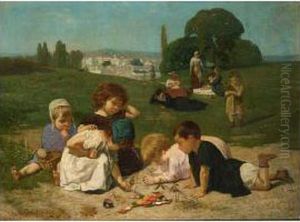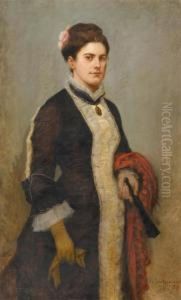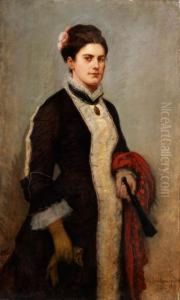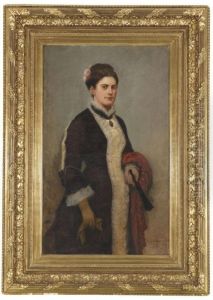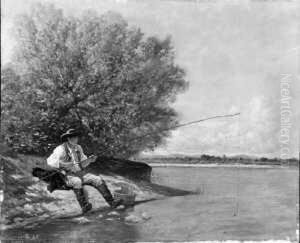Louis Frederic Schutzenberger Paintings
Louis Frédéric Schützenberger was a French painter, born on August 8, 1825, in Strasbourg, France. He hailed from a family with a rich history in the brewing industry, but he chose to pursue a career in the arts. Schützenberger's artistic talents became evident early on, and he received his formal training at the École des Beaux-Arts in Paris. He studied under the tutelage of influential artists such as Paul Delaroche and Charles Gleyre, which allowed him to develop a solid foundation in academic painting.
Throughout his career, Schützenberger exhibited a mastery of technique and was known for his historical and genre paintings, as well as portraits. His style was rooted in the academic tradition, characterized by precise draftsmanship, rich coloration, and a clear narrative approach in his compositions. He regularly participated in the Paris Salon, the official art exhibition of the Académie des Beaux-Arts in Paris, where he gained considerable recognition. In 1866, his work earned him a second-class medal at the Salon, solidifying his reputation as a respected artist of his time.
Schutzenberger's works often reflected the influence of the Romantic movement, with an emphasis on emotion and a fascination with nature, which was typical of the period. However, he also integrated elements of realism into his paintings, capturing the detailed likeness of his subjects and the subtleties of human expression. His portraits, in particular, were celebrated for their lifelike quality and depth of character.
Despite his success, Schutzenberger remained closely connected to his hometown of Strasbourg, and after the Franco-Prussian War of 1870, he played a significant role in the region's cultural rebuilding efforts. He was a professor at the Strasbourg School of Fine Arts and contributed to the development of the next generation of artists.
Louis Frédéric Schutzenberger passed away on April 17, 1903, in Paris. Today, his works can be found in various museums and collections across France, and he is remembered as a significant figure in 19th-century French painting. His legacy is marked by his dedication to the academic style and his contributions to the art world during a time of great social and political change in France.
